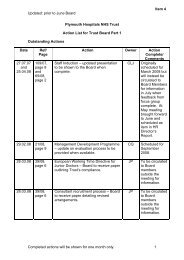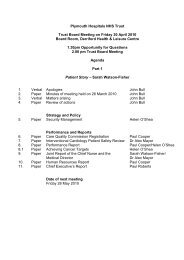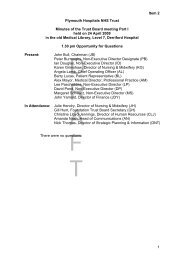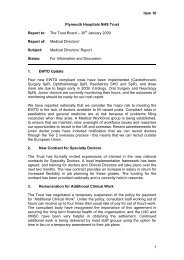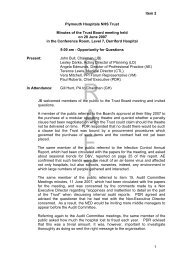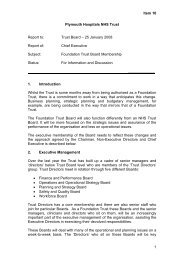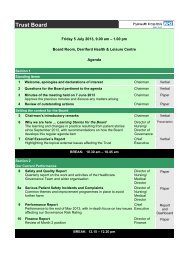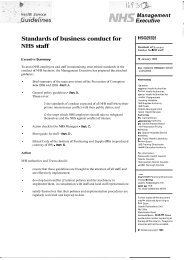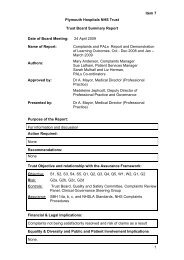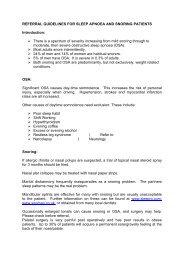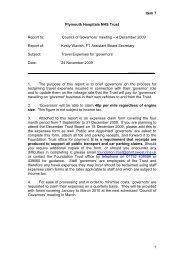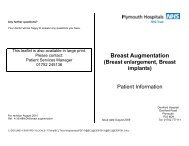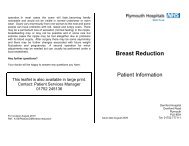PHT Public Trust Board Papers March 2011.pdf - Plymouth Hospitals
PHT Public Trust Board Papers March 2011.pdf - Plymouth Hospitals
PHT Public Trust Board Papers March 2011.pdf - Plymouth Hospitals
Create successful ePaper yourself
Turn your PDF publications into a flip-book with our unique Google optimized e-Paper software.
Item 2<br />
22/11 Chairman’s Introductory Remarks<br />
The Chairman stated that the <strong>Board</strong>’s discussions during the<br />
morning had focused on issues of patient safety, business<br />
management and leadership.<br />
23/11 Chief Executive’s Overview<br />
The Chief Executive briefed the <strong>Board</strong> on issues of topical<br />
interest.<br />
Care Quality Commission (CQC)<br />
The Chief Executive updated the <strong>Board</strong> on the outcome of the<br />
meeting with the CQC<br />
D<br />
on 22 February, on the implications of the<br />
CQC’s regulatory response resulting from the <strong>Trust</strong>’s inadequate<br />
compliance with the WHO’s surgical safety checklist and the<br />
subsequent service of a warning notice requiring compliance<br />
within 28 days. The CQC would make public a full report on<br />
their visit and the <strong>Trust</strong> was required to produce a robust and<br />
comprehensive action plan to address their concerns.<br />
R<br />
The main points of the <strong>Board</strong>’s discussions were:<br />
• Assurance to the public that patient safety was the top<br />
priority for the <strong>Board</strong>.<br />
A<br />
• Ensuring that every member of staff understood their own<br />
responsibilities for patient safety and that in every<br />
operating theatre there was a single accountable person.<br />
• An observational audit across all theatres and a single,<br />
mandatory,<br />
F<br />
WHO checklist had been implemented.<br />
Identification of non-compliance may involve disciplinary<br />
action. Executive <strong>Board</strong> members were working closely<br />
with nursing and medical leads to support them in the<br />
delivery of this.<br />
T<br />
• The importance of positive and productive discussions<br />
with the CQC; the fostering of a good relationship<br />
between the <strong>Trust</strong> and its Regulator was crucial in<br />
assisting regulators to do their work.<br />
Health Service Ombudsman’s Report on Care of the Elderly<br />
This national report was disturbing and highlighted the<br />
responsibilities involved in the care of this large and vulnerable<br />
group. The Chief Executive had visited ward staff on the day of<br />
the report’s publication and there was a shared sense of<br />
personal responsibility – which extended through the <strong>Trust</strong> and<br />
included the <strong>Board</strong> – that all staff could learn from the case<br />
5



